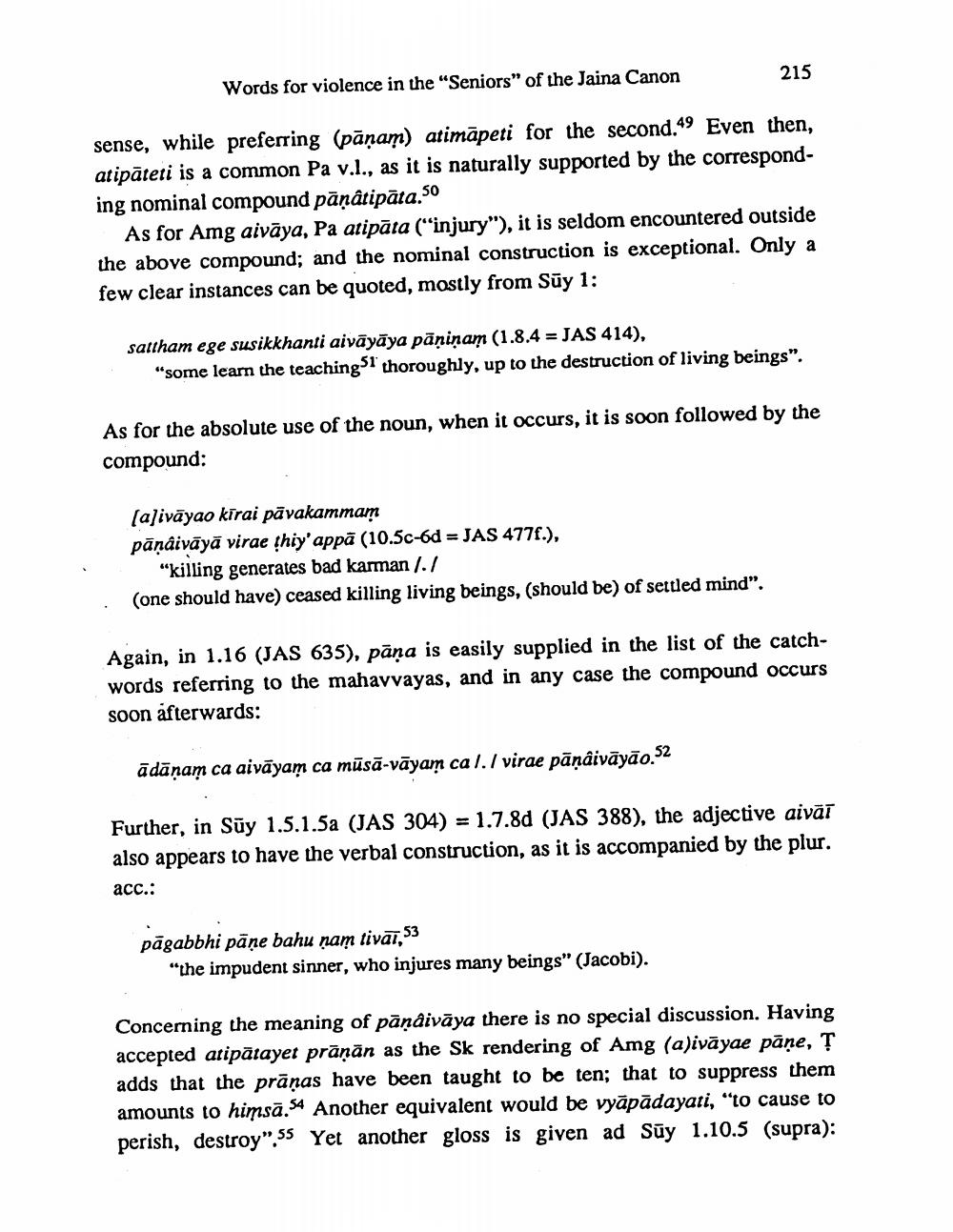________________
Words for violence in the "Seniors" of the Jaina Canon
215
sense, while preferring (pānam) atimāpeti for the second.49 Even then, atipāteti is a common Pa v.l., as it is naturally supported by the corresponding nominal compound pāņâtipāta.So
As for Amg aivāya, Pa atipāta (“injury"), it is seldom encountered outside the above compound; and the nominal construction is exceptional. Only a few clear instances can be quoted, mostly from Sūy 1:
sattham ege susikkhanti aivāyāya pāņiņam (1.8.4 = JAS 414),
"some learn the teachings thoroughly, up to the destruction of living beings".
As for the absolute use of the noun, when it occurs, it is soon followed by the compound:
(alivāyao kirai pävakammam pāņdiväyä virae thiy'appa (10.5c-6d = JAS 4778.),
"killing generates bad karman /./ (one should have) ceased killing living beings, (should be) of settled mind”.
Again, in 1.16 (JAS 635), pāņa is easily supplied in the list of the catchwords referring to the mahavvayas, and in any case the compound occurs soon afterwards:
ādānam ca aivāyam ca mūsā-vāyam cal. I virae pāņaivāyāo.52
Further, in Sūy 1.5.1.5a (JAS 304) = 1.7.8d (JAS 388), the adjective aivās also appears to have the verbal construction, as it is accompanied by the plur. acc.:
pāgabbhi pāņe bahu nam tivāī,53
"the impudent sinner, who injures many beings" (Jacobi).
Concerning the meaning of pāņdivāya there is no special discussion. Having accepted atipātayet prāṇān as the Sk rendering of Amg (a)ivāyae pāne, ? adds that the prānas have been taught to be ten; that to suppress them amounts to himsā.54 Another equivalent would be vyāpādayati, "to cause to perish, destroy".55 Yet another gloss is given ad Sūy 1.10.5 (supra):




